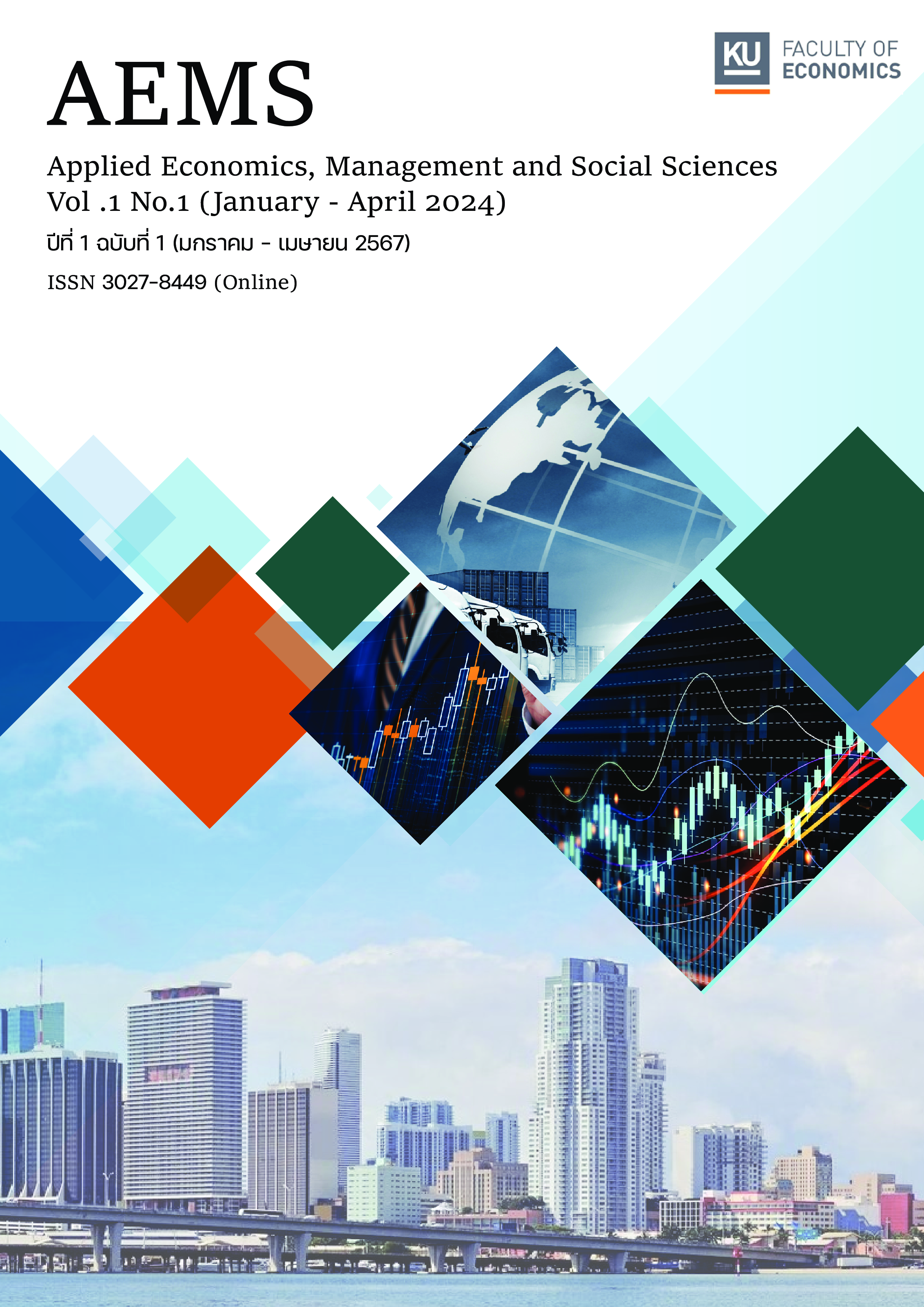Outcomes and Impact Assessment of Development and Community Tourism and Product Development for Supporting Grassroot Economy and Wellness Tourism Research Project
Main Article Content
Abstract
This research aims to evaluate the outcome and impacts of large-scale research and innovation programs under TSRI for driving the Bio-economy - Circular economy - Green economy (BCG in Action) within the sub-project Tourism and the Creative Economy, Development and Community Tourism and Product Development for Supporting Grassroot Economy and Wellness Tourism. 39 research projects in 2020 were used secondary data from the National Research and Innovation Information System (NRIIS) and primary data collected from online questionnaires. 5 selected projects were used primary data by in-depth interviewing with stakeholders. The analytical techniques based on the OECD assessment principle and the measure of economic surplus approach to assess the benefits of research program. The selected project analysis was used to evaluate the investment worth of the research. A brainstorming meeting was held to provide suggestions on the future research projects. The 39 research projects in 2020 under TSRI classified into input processes and outputs as follow: 1) Input: the research areas are mainly in social science. 3) Outputs: Most research project outputs are pilot outputs such as health and wellness programs, museum design and advertisements on social media. The research projects have produced several academic benefits such as research articles, manuals and publications, and books etc. Evaluating the outcomes and impacts of 5 research project case studies show that they increase impacts on economy, society, and environment. Total research funding for 5 projects were 104.94 million Baht generated significant economic surplus. The Social Return on Investment (SROI) was 5.51 and the Internal Rate of Return (IRR) was 54.56%. During the next 5-years, all five selected projects are worth in the investment. Research recommendations on the future research should focus on human development such as training courses, standards, local area development and exploring new natural attractions with an emphasis on eco-tourism development and health and wellness tourism.
Article Details
References
เกศกุล สระกวี. (2564). ผลกระทบทางสังคม (Social Impact Assessment: SIA) ของโครงการพัฒนาการท่องเที่ยวโดยชุมชน กรณีชุมชนในเขตพื้นที่พิเศษเพื่อการท่องเที่ยว. วารสารพัฒนศาสตร์, 4(2), 129-183.
กัมปนาท วิจิตรศรีกมล. (2564). การประเมินผลกระทบจากงานวิจัยและพัฒนา: หลักการเบื้องต้นและแนวปฏิบัติ. (พิมพ์ครั้งที่ 2). กรุงเทพฯ: สถาบันคลังสมองของชาติ.
เฉวียง วงค์จินดา. (2564). การประเมินเส้นทางผลลัพธ์และผลกระทบ ภายใต้ชุดโครงการพัฒนาผลิตภัณฑ์ชุมชน ท้องถิ่นจังหวัดอุตรดิตถ์. Burapha Journal of Business Management, Burapha University, 10(2), 19-39.
มูลนิธิสถาบันวิจัยเพื่อการพัฒนาประเทศไทย. (2555a). รายงานฉบับสมบูรณ์โครงการการประเมินผลการวิจัยของประเทศ. กรุงเทพฯ: สำนักงานคณะกรรมการวิจัยแห่งชาติ.
มูลนิธิสถาบันวิจัยเพื่อการพัฒนาประเทศไทย. (2555b). ตัวอย่าง รายงานการประเมินผลการวิจัยและพัฒนาของประเทศ ประจำปี 2554. กรุงเทพฯ: สำนักงานคณะกรรมการวิจัยแห่งชาติ.
สมพร อิศวิลานนท์ และสุวรรณา ประณีตวตกุล. (2547). การประเมินผลกระทบจากงานวิจัยทางวิทยาศาสตร์. กรุงเทพฯ: ศูนย์วิจัย เศรษฐศาสตร์ประยุกต์ มหาวิทยาลัยเกษตรศาสตร์.
สำนักงานคณะกรรมการส่งเสริมวิทยาศาสตร์ วิจัยและนวัตกรรม (สกสว.). (2563). แนวทาง/แนวโน้ม งานวิจัยท่องเที่ยว และเศรษฐกิจสร้างสรรค์ ปี 2564. เปิดเส้นทางทุนวิจัย ผ่านสัมนาออนไลน์ Zoom Webinar กับหน่วยบริหารจัดการทุนด้านการเพิ่มความสามารถในการแข่งขัน (บพข.) สำนักงานคณะกรรมการส่งเสริมวิทยาศาสตร์ วิจัยและนวัตกรรม (สกสว.). ค้นจาก https://dept.npru.ac.th/rdi/data/files/Section-03.pdf.
สำนักงานคณะกรรมการส่งเสริมวิทยาศาสตร์ วิจัยและนวัตกรรม (สกสว.). (2565). กรอบและขอบเขตการประเมินแผนงานวิจัยและนวัตกรรมขนาดใหญ่ ที่มีมูลค่า 100 ล้านบาทขึ้นไป (เอกสาร ประกอบการเขียนข้อเสนอโครงการประเมินแผนงานวิจัยและนวัตกรรมขนาดใหญ่). กรุงเทพฯ: สำนักงานคณะกรรมการส่งเสริมวิทยาศาสตร์วิจัยและนวัตกรรม.
Alston, J. M., Norton, G. W., & Pardey, P. G. (1998). Science Under Scarcity Principle and Practice for Agricultural Research Evaluation and Priority Setting. Oxfordshire: CAB International Publishing.
Davis, H. C., & Webster, D. R. (1981). A compositional approach to regional socio-economic impact assessment. Socio-Economic Planning Sciences, 15(4), 159-163.
Evenson, R. E. (2001). Economic impacts of agricultural research and extension. Handbook of agricultural economics, 1, 573-628.
Haacker, M., Hallett, T. B., & Atun, R. (2020). On discount rates for economic evaluations in global health. Health Policy and Planning, 35(1), 107-114.
OECD. (2019). Better Criteria for Better Evaluation Revised Evaluation Criteria Definitions and Principles for Use. OECD/ DAC Network on Development Evaluation. Paris: Organisation for Economic Co-operation and Development.
Reed, M. S., Ferré, M., Martin-Ortega, J., Blanche, R., Lawford-Rolfe, R., Dallimer, M., & Holden, J. (2021). Evaluating impact from research: A methodological framework. Research Policy, 50(4), 104147.
